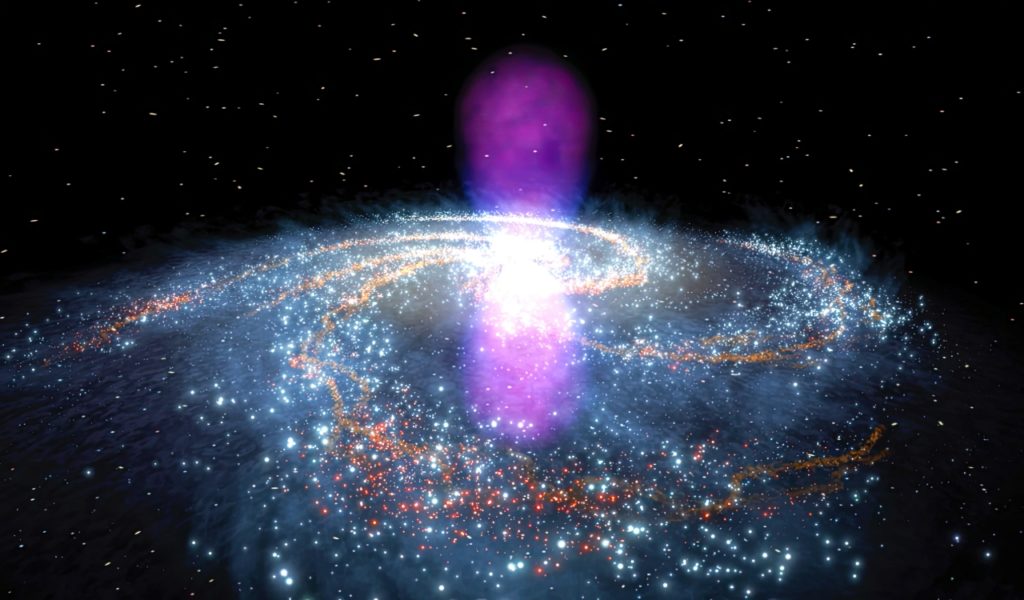There are bubbles of radiation popping out from the center of the Milky Way Galaxy. It is thought that they began as both a stream of electrons as well as their antimatter counterparts, positrons. This new discovery is telling us a great deal about what cosmic antimatter can do.
The observations find that there is an excess of positrons zipping past Earth. That suggests that the bubbles are the result of some sort of burp from the Milky Way’s supermassive black hole. Which likely came as a result of some sort of meal millions of years ago.
Of course, bubbles of gas like this aren’t new to science. We call them Fermi Bubbles, which extend both above & below the center of the Milky Way.
Several observations have since spotted bubbles in microwave radiations & x-rays as recently as 2020. Yet astronomers aren’t completely sure how they formed.
How Cosmic Antimatter Can Explain This

The cosmic antimatter, along with a jet of high-energy electrons, emitted by the supermassive black hole in one big burst, might explain the multi-wavelength light the bubbles have. That is according to Ilias Cholis of Oakland University, who reported their findings to the American Physical Meeting on April 18th.
The initial burst would have launched most of the particles along with jets aimed perpendicular to the Milky Way’s disk. As these particles interact with other galactic matter, they’ll have to lose energy. That would then cause the emission of different wavelengths of light.
Of course, these jets were not being aimed in the Earth’s direction thankfully. This means that one could not detect those particles. However, some of the particles could have potentially escaped along with the galactic disk. Theoretically, they’d be perpendicular to the bubbles and end up passing Earth.
Cholis discussed this further, claiming:
“It could be that just now, some of those positrons are hitting us.”
Iason Krommydas of Rice University joined Cholis in analyzing positrons detected by the Alpha Magnetic Spectrometer, which is on the International Space Station. The two lucked out in their testing and managed to find an excess of positrons that have present-day energy that could correspond to a burst of activity from the galactic center.
Likely, this could have begun as far back as 3 to 10 million years ago! Interestingly, this just so happens to be roughly the same timeframe when Fermi Bubbles likely began forming.
Both Cholis & Krommydas agree that this supports the idea that Fermi Bubbles came from a time when the Milky Way’s central black hole was a lot busier than it is today.
Resources:
https://meetings.aps.org/Meeting/APR23/Session/U13.1
https://fermi.gsfc.nasa.gov/science/constellations/pages/bubbles.html